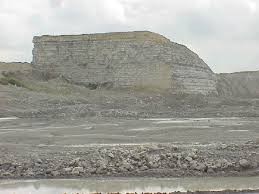
By Alex C
While the battle for cement grade applications continues to rage on, analysts see higher production costs which will translate into higher cement prices and lower product availability on the part of cement manufacturers in the country.
According to research analysts, restrain in the manufacture and use of 32.5N grade of cement will create needless troubles in the industry, as concerns should be concentrated on poor construction practices, the most common of which is the addition of water to improve workability of the concrete.
Regulatory authorities and stakeholders are concerned over inappropriate mixes and/or excessive extension, both of which occur as a result of ignorance and possibly fraudulent intent on the part of builders.
“The key implication on manufacturers is they will need to increase the amount of clinker in their product, and blend in a lot less additives. The purer clinker would need to be milled even finer than before, implying higher fuel electricity costs than previously. This clearly puts those manufacturers close to full capacity utilisation at greater risk, as it would negatively impact on available volumes. Higher electricity tariffs become more relevant in this scenario as well,” Oyindamola Olanrewaju, research analyst at Renaissance Capital (RenCap), a research and investment banking firm explained.
There are complaints in certain quarters that 32.5 grade is largely responsible for building collapses around the country. The House of Representatives ad hoc committee on cement composition and pigmentation recently held a public hearing upon which the Standards Organisation of Nigeria (SON) issued a directive that cement with strength rating 52.5R be used for bridges; 42.5R for casting of columns, beams, slabs and for moulding blocks, and 32.5 can used for plastering only.
Presently, there are series of court actions challenging the link between building collapse and cement quality as well as processes followed by SON in arriving at the new standard.
According to Renaissance Capital research, “We do not believe that 32.5N cement in itself is the cause of collapsing buildings, and do not expect the restriction in its manufacture and use to address the underlying problem without creating further problems. Low strength rated cement is not of its own a cause of collapsing buildings and its elimination will not necessarily result in better quality buildings, in our view. The only impact we see is higher cost of cement production which will inevitably be passed onto the end user in the form of higher cement prices, and lower availability of cement.’’
On the connection between cement and concrete, the investment banking firm stated that the composition of the cement used in making concrete drives the compressive strength of the concrete and the relevant application.
It added that a 25 percent strength gain between seven and 28 days is often observed with 100 percent Ordinary Portland Cement (OPC) vs. other mixtures. RenCap maintained that strength gain depends on the type of mixture, its constituents, the use of standard curing, etc.
Stakeholders in the construction industry agree with RenCap that inability to carry out soil tests and involve professionals, as well as poor construction practices, among others, are factors causing building collapses, not 32.5 grade.
Image Source: cnx.org

